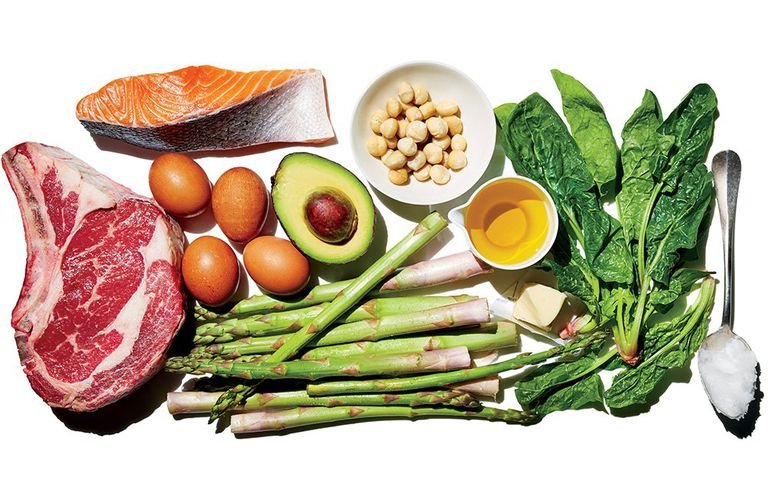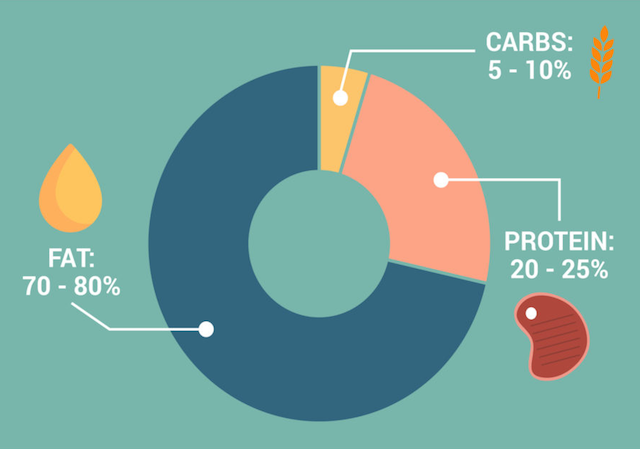The Keto diet – Your essential guide
By Martin Ebner, Head PT and sports nutrition specialist at ebylife.
By now, you'll have heard of the Ketogenic diet or Keto for short, but what the hell is it? Is it any good? How does it work? And is it right for you?
Here's everything you need to know about the ketogenic diet.
What is the Keto diet?
The Keto diet is a very low carb (5-10%) moderate protein (20-25%) and very high fat (70-80%) diet.
Originally created by Russel Wilder in 1921 to treat epilepsy, the Keto diet, some 90+ years later has become very popular amongst those looking to quickly lose weight.
How does the Keto diet work?
The Keto diet works by starving the body of carbohydrates (glucose) – the body's primary source of energy.
In the absence of carbohydrates for a period of time, the body has little choice but to begin looking elsewhere for energy. The liver begins to convert stored fat into ketones, which are said to be a much cleaner and more efficient form of energy than glucose. The result is higher levels of ketone bodies in the blood which produces a state known as Ketosis – the radical change in which your body starts to use ketones instead of glucose as fuel – the literal state of burning fat as energy.
What food is included in the Keto diet?
Anything that is made up primarily of fat and protein.
Meat, fish, poultry, etc
Eggs and some full-fat dairy – cream, butter, and certain cheeses.
Leafy greens – spinach, rocket, kale, etc.
Vegetables (low carb) – broccoli, cauliflower, asparagus, etc.
Nuts and seeds – peanuts, almonds, flax and sunflower seeds, etc.
Fruit - avocados (and that's about it, unfortunately)
Oil – coconut, olive, sunflower, etc.
Sweeteners – stevia, monk fruit, etc.
What food isn't included in the keto diet?
Anything that is made up primarily of carbohydrates is strictly off-limits.
Grains – wheat, cereals, corn, rice, etc.
Sugar of any kind - honey, maple syrup, agave, etc.
Fruit of any kind (except avocados).
High carb vegetables - potatoes, carrots, beets, etc
Beans and legumes – Lentils, chickpeas, etc.
Most dairy, with the exception of those listed above.
Hold on! Looks just like the Atkins diet. What's the difference?
While it does look and sound a lot like the Atkins diet, there is a small difference. Where the Atkins diet calls for an unlimited amount of protein, the Keto diet encourages keeping your protein intake moderate (around 0.7g per pound of body weight) with more emphasis being placed on fat consumption.
The pros and cons of the Keto diet
The Pros:
It's very effective for weight loss - The key benefit to the Ketogenic diet is that you can trick your body into using fat as its key energy source. When followed meticulously, you turn your body into a fat-burning machine.
Control blood sugar – The Keto diet naturally lowers blood sugar levels thanks to its carb restrictive nature. If you are pre-diabetic or have type II diabetes, the Keto diet could help control blood sugar levels.
Improved mental focus - If you can stop thinking about carbs for just one second, you may be able to improve your mental performance. Ketones are said to be a great source of brain fuel and without the excessive consumption of carbs, you shouldn't suffer from blood sugar spikes which can lead to poor focus and concentration.
Increased energy – Some say that by providing your body with a cleaner source of energy aka fat, you will feel more energized throughout the day.
Less hunger - Fat, at 9 calories per gram is said to be the most satiating macronutrient which can help you stay fuller for longer.
The cons:
Unsustainable – Let's start with the obvious shall we. You have to live on 15 - 30g of carbs per day (equivalent to 1/2 medium banana) whilst prioritizing fat over protein. This makes it one of the hardest diets to stick to for any extended period of time.
The Keto flu – During the first couple of weeks you may experience carbohydrate withdrawal as your body adapts to a state of Ketosis. This can be quite uncomfortable with symptoms including drowsiness, achy body, nausea, dizziness, and irritability.
Superpowers - you'll need the willpower of a Shaolin monk and a phD in mathematics to keep track of your macronutrient consumption.
How you know when you’re in Ketosis
Weight loss and a lower body fat percentage are the most obvious signs that you're in ketosis. Failing any changes to your weight or physique, you can also measure ketosis with urine or blood strips, although just like the diet, it seems a little excessive (sorry, I had to get a dig in). ,
Here are some additional signs and symptoms of Ketosis.
Increased Urination - Keto is a natural diuretic so initially, you may have to go to the bathroom more frequently.
Dry Mouth and increased thirst - This happens mainly due to the first symptom. Make sure to consume plenty of water and replenish electrolytes (salt, magnesium and potassium).
Bad Breath - Oh la la! If you have a taste or sharp smell of overly ripe fruit or nail polish remover, this could be a sign you're in ketosis.
Reduced Hunger & Increased Energy – This tends to happen after the initial shock and keto flu. You may experience less hunger and better mental clarity.
Is the Keto diet right for me?
This really depends on your reasons for doing it. While the Keto diet can be very effective for weight loss and fat burning specifically, I wouldn't recommend it due to its highly restrictive nature. Any diet that encourages strict limits or the exclusion of certain food groups is never going to work as a long-term solution.
If your goal is weight loss, instead of taking such extreme measures to drop a few pounds as quickly as possible, I would encourage you to think longer-term and less drastic. By allowing yourself to eat the foods you most enjoy in moderation, you'll be a much happier person and far more likely to make positive and long-term changes that encourage sustainable weight loss.



